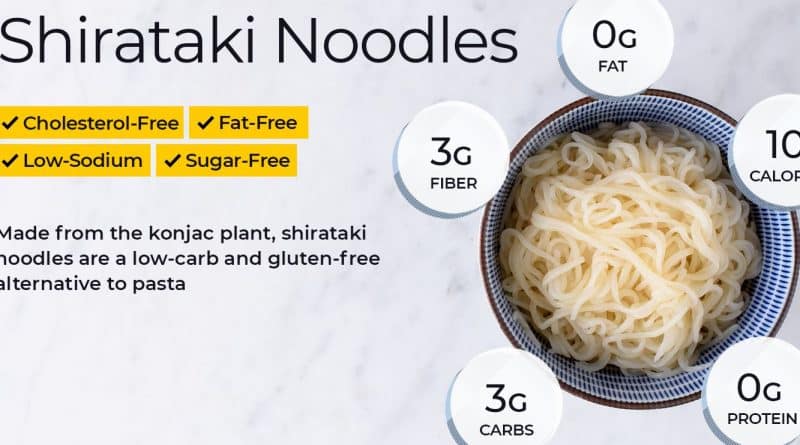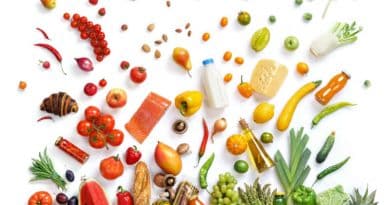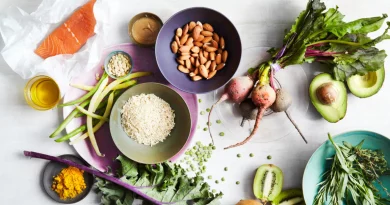Shirataki Noodles – Are They A Super Food?
If you’re trying to lose weight, by now you may have heard of shirataki noodles. These noodles were invented by the Japanese over 2000 years ago.
Shirataki noodles are made from flour ground from the bulbous root (or corm) of the Konjac plant. This flour is known as konjac flour and is not a carbohydrate like traditional flour. It is 100% soluble fiber which is combined at a ratio of 3% to 97% water to create a solid gel. When left in blocks this gel is called konnyaku. When formed into noodles it is called shirataki which means ‘white waterfall’. Traditional konnyaku is grey from the addition of seaweed to the mix.
Konnyaku and Shirataki are effectively calorie-free since the human body is incapable of converting fiber into energy. Even if konjac flour were a traditional carbohydrate, a 100-gram serve of shirataki would contain only 12 calories based on the three grams of fiber it contains and the fact that one gram of carbohydrate contains four calories.
Most of the health benefits of shirataki are derived from fiber content. The American Dietetic Association recommends 20-35 grams of fiber per day. The average American only consumes around 15 grams of fiber per day.
Health Benefits of Shirataki
One serving of shirataki noodles per day;
- Helps prevent ‘spikes’ in blood sugar levels by stabilizing them.
- Are gluten-free.
- Are carbohydrate free and ideal for low-carb diets like Atkins.
- Reduces cholesterol levels by around 10% and LDL (bad cholesterol) by 7.2%.
- Reduces triglycerides by 23%.
- Reduces Systolic blood pressure by 2.5%.
- Boosts the immune system.
- Reduces inflammation and helps prevent polyps from forming in the colon.
- Aids in vitamin and mineral absorption.
- Increases healthy bacteria in the colon.
- Helps prevent colon cancer.
- Effectively contains zero calories making it ideal for weight loss. Compare this to an average of 210 calories per cup of traditional pasta or noodles.
- Fiber acts as an appetite suppressant by slowing digestion and keeping you full for longer.
Disadvantages of Shirataki
- Contain zero nutrients other than fiber
- Too much shirataki may result in diarrhea.
- Some people may find the odor of shirataki unpleasant. (Simply rinse shirataki to remove odor).
- Shirataki has a gelatinous texture similar to rice noodles and some people don’t like this texture, especially if they hope to replace traditional pasta.
- Shirataki noodles have little flavor so must be combined with other tasty foods.
- Insufficient other food at the same time as shirataki will result in malnutrition.
Warning: In the 1960s, a Japanese writer named Soichi Ohyake is rumored to have died of malnutrition after eating nothing but konnyaku and shirataki to lose weight.
So are shirataki noodles a superfood? The answer is a resounding ‘NO!’ The term superfood refers to highly nutritious foods. This doesn’t apply to shirataki noodles since the only nutrient is fiber.
However, when used in conjunction with a healthy, balanced diet they are ideal for anyone who wants to lose weight and take advantage of the health benefits they present. So they are well worth making a regular part of your diet.



